I’ve been using brewing software at a really basic level since the day I started homebrewing. As I got more advanced, I used various programs and calculators to finetune my system, build and manage my own water profile, estimate mash pH, calculate acid and salt additions, and everything else associated with my brew day.
I arbitrarily created a Brewfather account recently to see what it was all about. I was immediately wowed by all the features I’d grown accustomed to over the years in a simplified layout and more user-friendly interface. So I rebuilt my equipment profile, added a recipe, and did a brew day.
So I guess you can consider this my formal hands-on review of the Brewfather app.
What is Brewfather?
Brewfather, like BeerSmith or Brewer’s Friend, is an advanced brewing program made for beer recipe design and brew day process. The platform contains both basic and advanced features for all-grain and extract brewers. All of this comes packed with your typical brewing statistics such as ABV, OG, FG, IBU, SRM, water calculations, yeast starter calculations, and much much more. Brewfather takes the guesswork out of your brew day by allowing you to dial in your entire process and calculate every part of the process.
What I like about Brewfather is its all-in-one nature and general ease of use. You can build your recipes by selecting your ingredients from a database and it uses all of the information to formulate just about everything you will need. I love that I don’t need additional programs or calculators for any other component of my brew day, although some still do. It’s a matter of preference.
Recipe Design and Calculations
In order to get a comparative sense of the platform’s functionality, I imported one of my trusted recipes via beer XML file. Just note this is a premium feature and requires a paid prescription. Overall, the recipe rendered very similarly to previous batches…which is what I was hoping for. Just to note I made sure to delete any prior water, pH, and salt additions in Brewfather to get new native calculations.
The part I was most interested in comparing was acid additions, pH estimates, and water salt additions. In my side by side recipe, unadjusted mash pH was exactly the same, salt additions were nearly identical (marginal differences), and lactic acid additions were very close. My lactic acid calculation actually favored Brewfather in terms of estimated vs actual (it was dead on). I came to this conclusion based on how much acid I actually added to my mash from the previous batch compared to the actual measured mash pH. In my first true pilot batch, my acid calculation was once again very accurate. I’ll continue to monitor this as I use the platform more.
At the end of the day, all brewing software platforms are only as accurate as the information you put in. While the default data is a nice starting point, you’ll need to track and record every aspect of your brewing steps to really fine-tune your system to get repeatable and predictable results.
Why I Prefer Brewfather

In my eyes, Brewfather has a serious edge in terms of its overall ease of use, 3rd party integrations (like Tilt), and mobile access from any device. The Tilt integration allows you to view your Tilt fermentation chart from within the Brewfather app—it’s pretty slick and only takes a few minutes to set up. The best part is you can save the data associated with a given batch so you can easily refer back to historical brews. Read my Tilt review here. These features are the main reason I purchased an annual subscription.
Since Brewfather is completely cloud-based, you have easy access to your full account and all of your recipes no matter what device you access it from. Any compatible computer, tablet, or smartphone has full access to all of the application’s robust recipe design features, calculators/tools, and brewing profiles. This is incredibly useful for making adjustments on the fly that instantly and automatically update to the cloud.
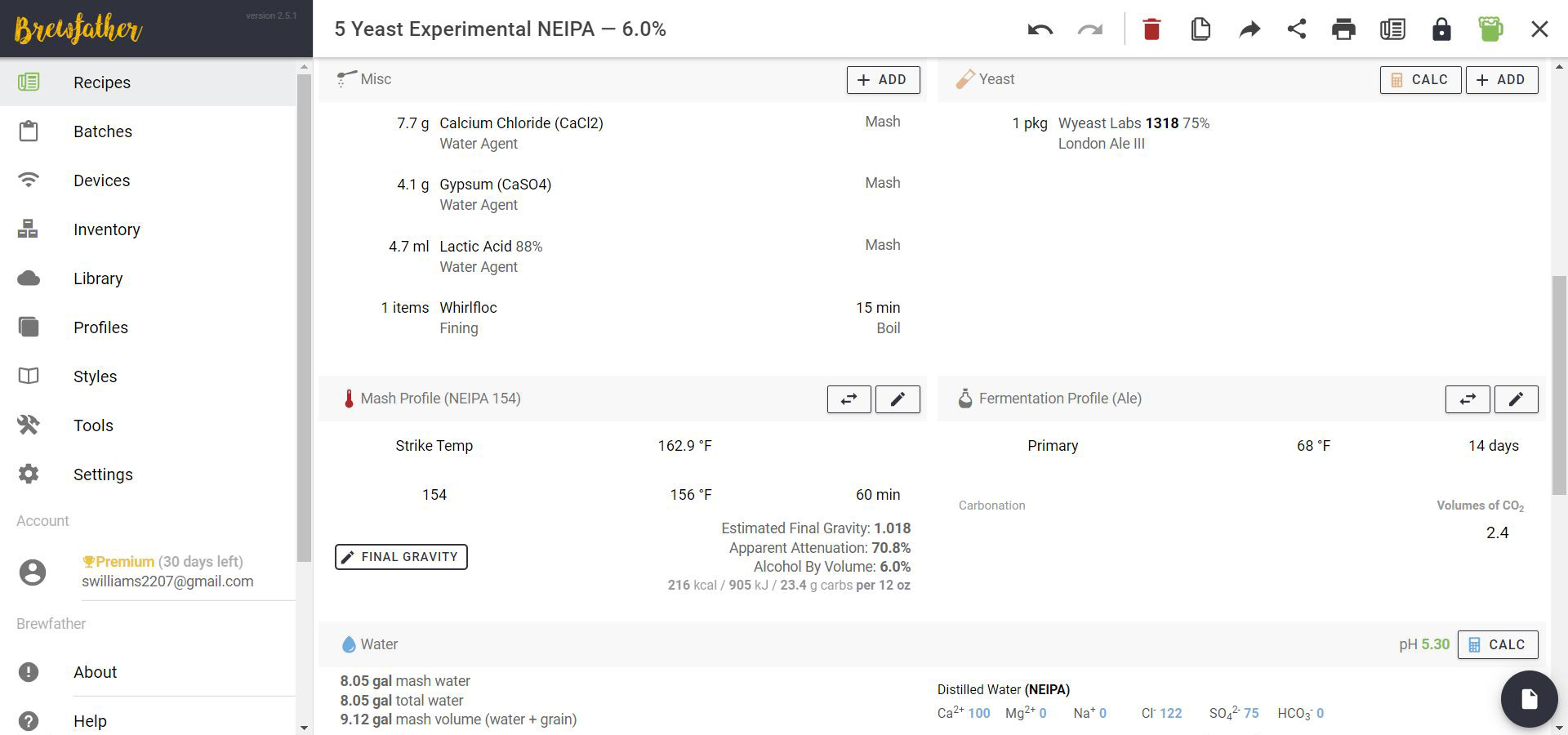
User Interface and Mobile App
Brewfather contains all of your brew day information in a single view. There is no performance difference between the desktop and mobile versions of Brewfather. The mobile version collapses into a single column but still contains the same information and gives you the same level of control as the desktop version. This is hugely beneficial for me as I only have a desktop at my house. The Brewfather mobile app feels very fluid and is really easy to navigate.
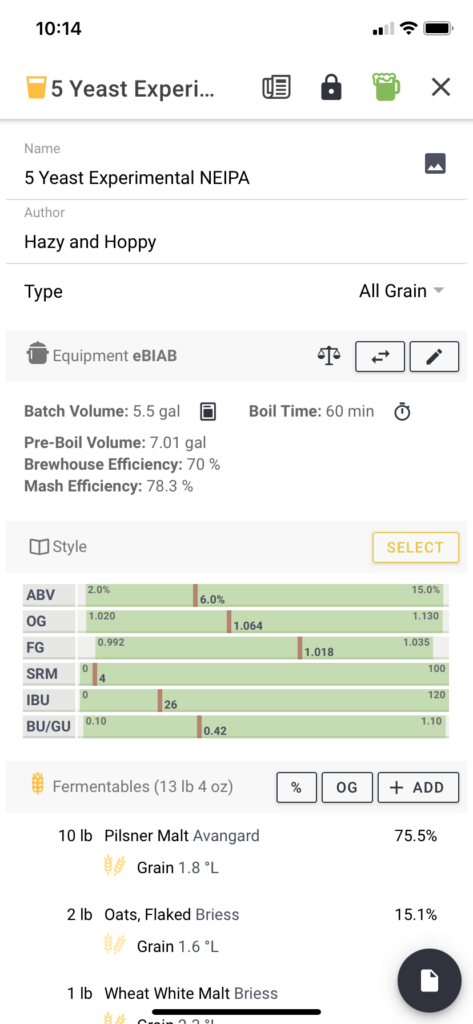
Mobile recipe builder 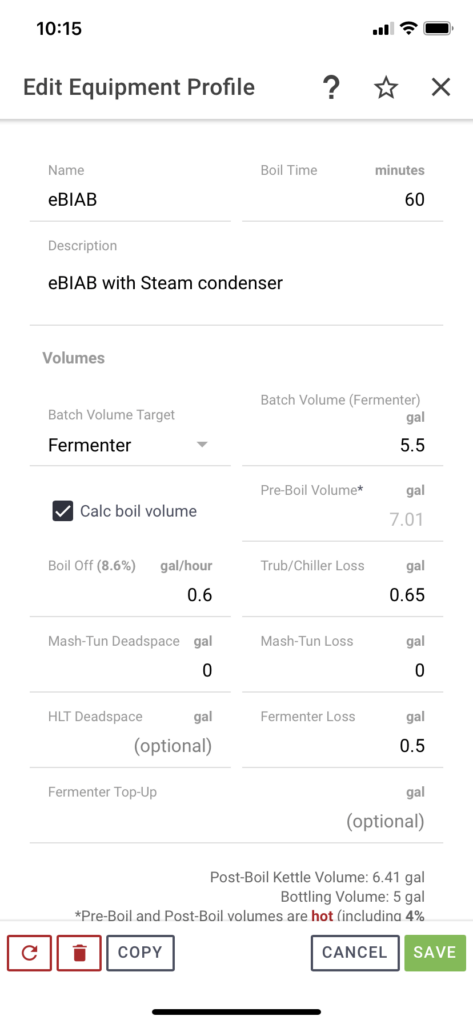
Mobile equipment profile builder 
Mobile water profile builder
Batches and Brew Day
Brewfather has a lot of features associated with the actual brewing steps. One of the nicest is their batch feature. This is where the data from your actual brew day comes into play. Brewfather recipes serve as the original source where your batch is the brewing process where changes can be freely made without altering the original recipe. This is great if you want to scale or tweak a recipe without having to clone and create two versions. This also allows you to document multiples brews of a given recipe and have independent stats and gravity/temp charts (via Tilt) for each batch.

I’ve always been a clipboard and paper guy when it comes to brewing notes. Recording notes/data directly on my phone as I brew will help me stay a lot more organized. You can see the Measured Values section in the screenshot below. Directly under that section is a side by side chart with contains predicted vs measured results in a single view.
The app comes with a mash and boil timer. I really like the boil timer because it sends a push notification to my phone when any boil addition is due. I didn’t think I would use this functionality since I can program steps on my BrewCommander, but this allows me to hang around upstairs during the boil where I can’t hear the BrewCommander alarm. It’s also automatically set up for me from the recipe design so no additional programming is required. I really love it—especially with a lot of boil hops.
I also love being able to sync my Tilt’s gravity and temp readings right within the batch data. This is more convenient and easier to access than the out-of-the-box Google Sheets Tilt data. It’s nice that everything is in one place for later referral.
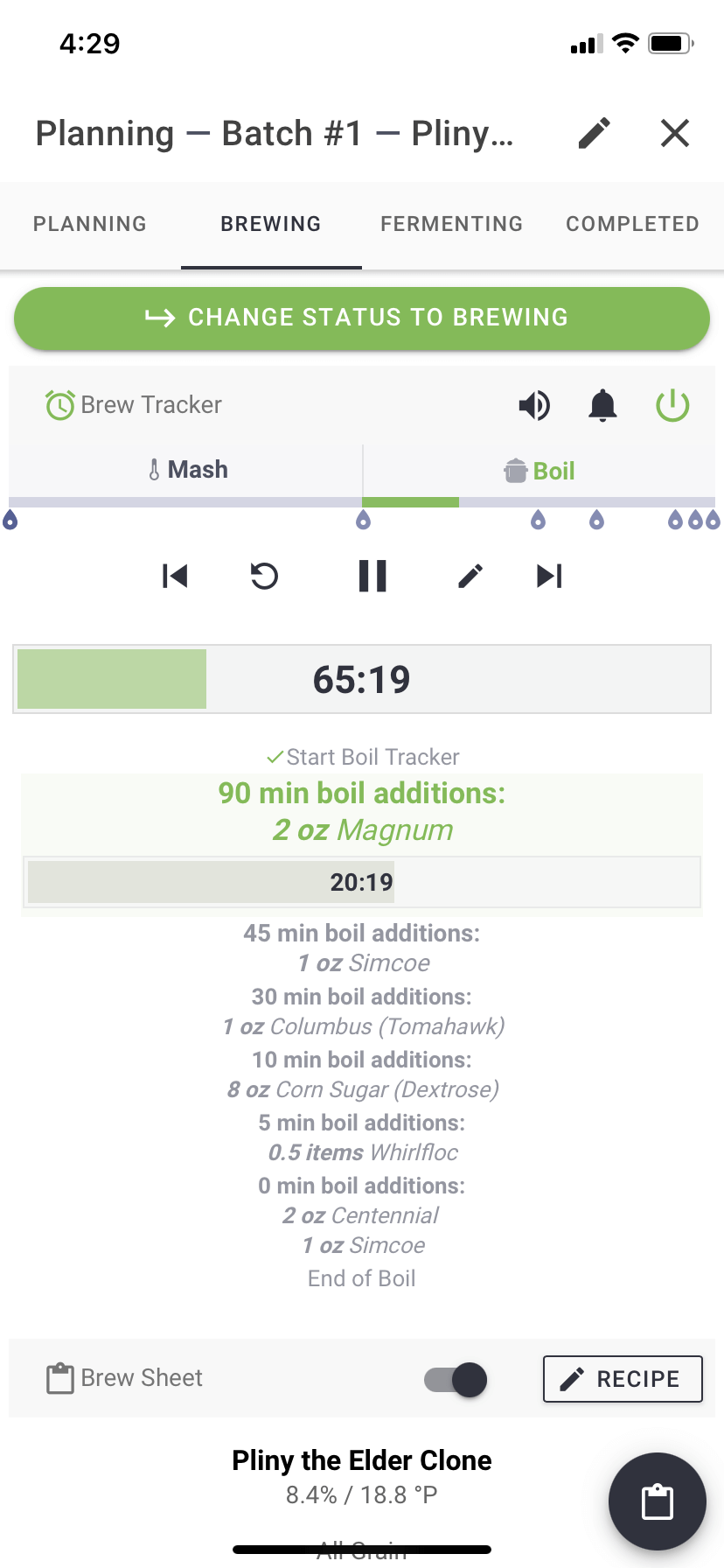
Boil timer with additions 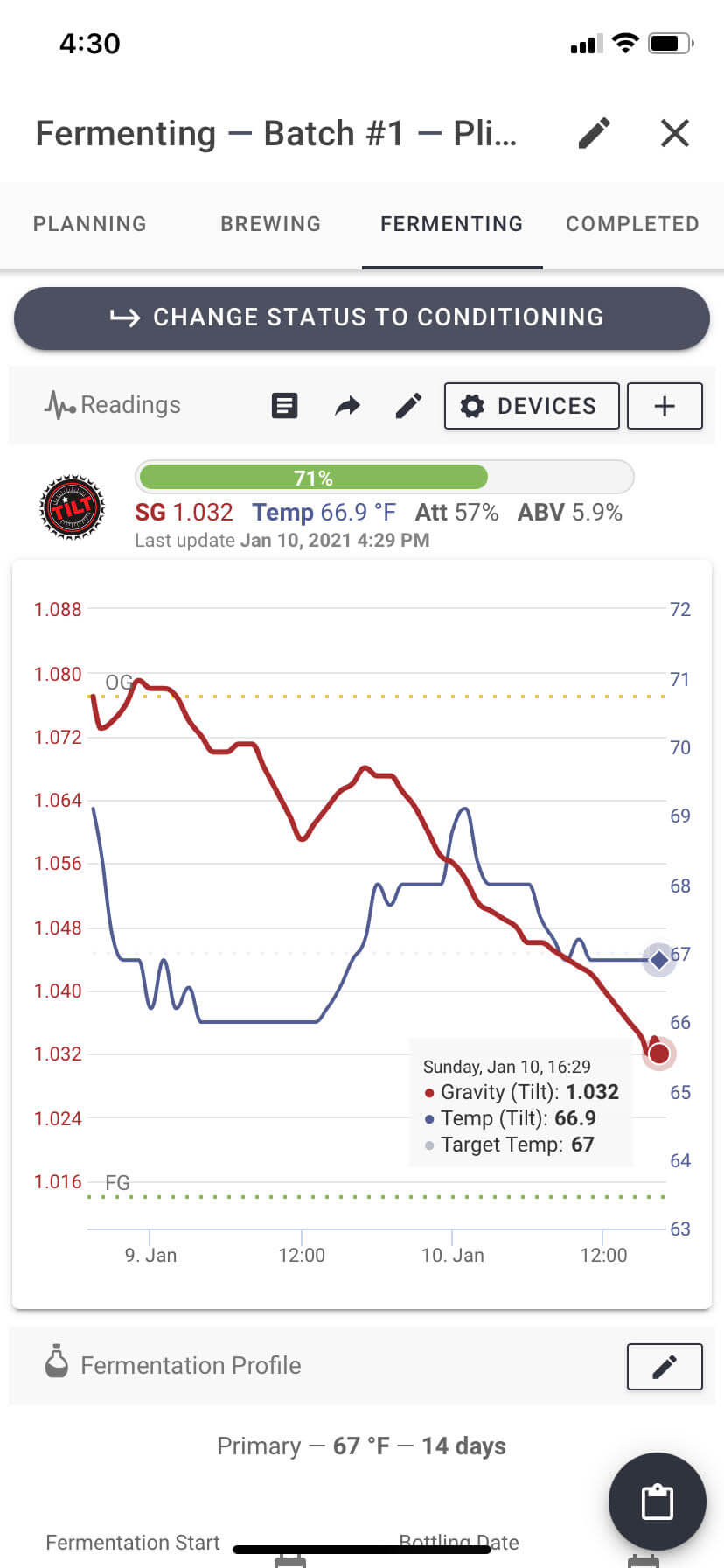
Tilt reporting in batch
Final Thoughts
The Brewfather recipe and profile configuration are both really intuitive. I think this is largely due to the fact that I already have a general understanding of how brewing software works and how to configure my equipment. It took me about 15 minutes to build my BIAB profile and manually build my first all-grain recipe—all of this without watching at a single tutorial.
The platform’s design is really clean and is not as overwhelming as other platforms I’ve experimented with in the past. I felt confident about jumping right in. I’m a big fan of simplicity when it comes to technology. In general, I just want stuff to work how you’d intuitively expect it to. I know homebrewing isn’t necessarily a simple hobby, but the Brewfather app was well thought out and really delivers. There is a slew of features and functionality I did not cover here as it would take a long-winded article. Here is a video tutorial that dives into more of the details.
You can use the Brewfather app for free with the vast majority of features and calculators and store up to 10 recipes. If you want additional features, 3rd party integrations (like Tilt monitoring), and unlimited recipes, you’ll have to upgrade to a premium plan for $19.99 annually. This is a small price to pay and absolutely worth it to me, given the amount of time, money, and frequent updates that have been poured into the app.
As a final bonus, the Brewfather hosts a library of sharable recipes users have added or created. It’s not a bad source of inspiration, especially if you’re just getting started. And speaking of just getting started, I’d highly recommend Brewfather to anyone looking to start using brewing software. You can start for free and I just think it’s an approachable platform that isn’t overly complex or intimidating yet still packed with advanced features.


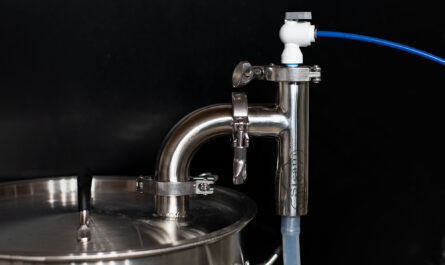


Same boat as you but I went to Brewer’s Friend about 2 years ago from Beersmith. Have you used Brewer’s Friend? I wish there was any easy to way export my Brewer’s Friend recipes into Brewfather other wise I would have dove in headfirst.
I’ve played around with it before but never committed to using it for a brew day. For whatever reason I was not crazy about it. Are you able to export xml files? I’m only
Seeing a share feature.
Just found out how to download my full library of Beerxml files, then I can import one at a time – Just need to pay for premium Brewfather access. I’ll give it a go for a little bit paying monthly before I cancel Brewer’s Friend and pay for a full year.
Believe you can pay monthly and or do a premium free trial FYI. that’s what I did.
Well, I ended up just paying for a month. Took me 10 minutes to just click through and import about 35 recipes. Was really pretty easy once I was in the zone. Going to build a recipe for the next brew and see how it all shapes up.
Shawn – I agree with you on all your points on Brewfather; a big plus is the fact that I can use my iPhone to run my brew on brew day, and enter notes.
But — like you, I am a long- term Beersmith user, and while I’ve brewed a few batches with Brewfather, and liked it, I have trouble building recipes, specifically with inventory. I am in the US, and the Brewfather app seems to be very “europe/UK” based. When I try to enter my existing inventory in Brewfather, I have difficulty with the ingredient database in Brewfather, specifically around the color and hops ibu. I realize I can change ibu in the recipe, but it bothers me that the ingredients seem ( and library of recipes) seems to be heavily based from outside USA. Not sure where you call home, but if from USA, did you have same issues to overcome? Not banging UK or Europe, just trying to get adjusted
Hey Gary – in all honesty I have not played with the inventory settings as I simply do not have the storage for extra grains. It’s something I would like to do in the future when I can get more organized. Assuming you have your settings set up to US measurements correct? I’m located in the US but have not experienced what you’re taking about at least outside of the inventory settings.